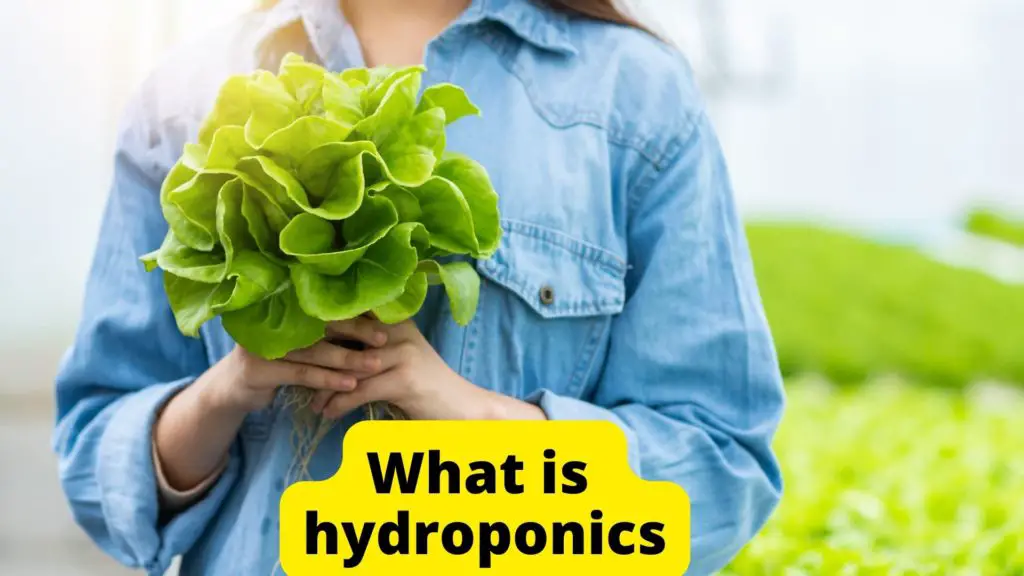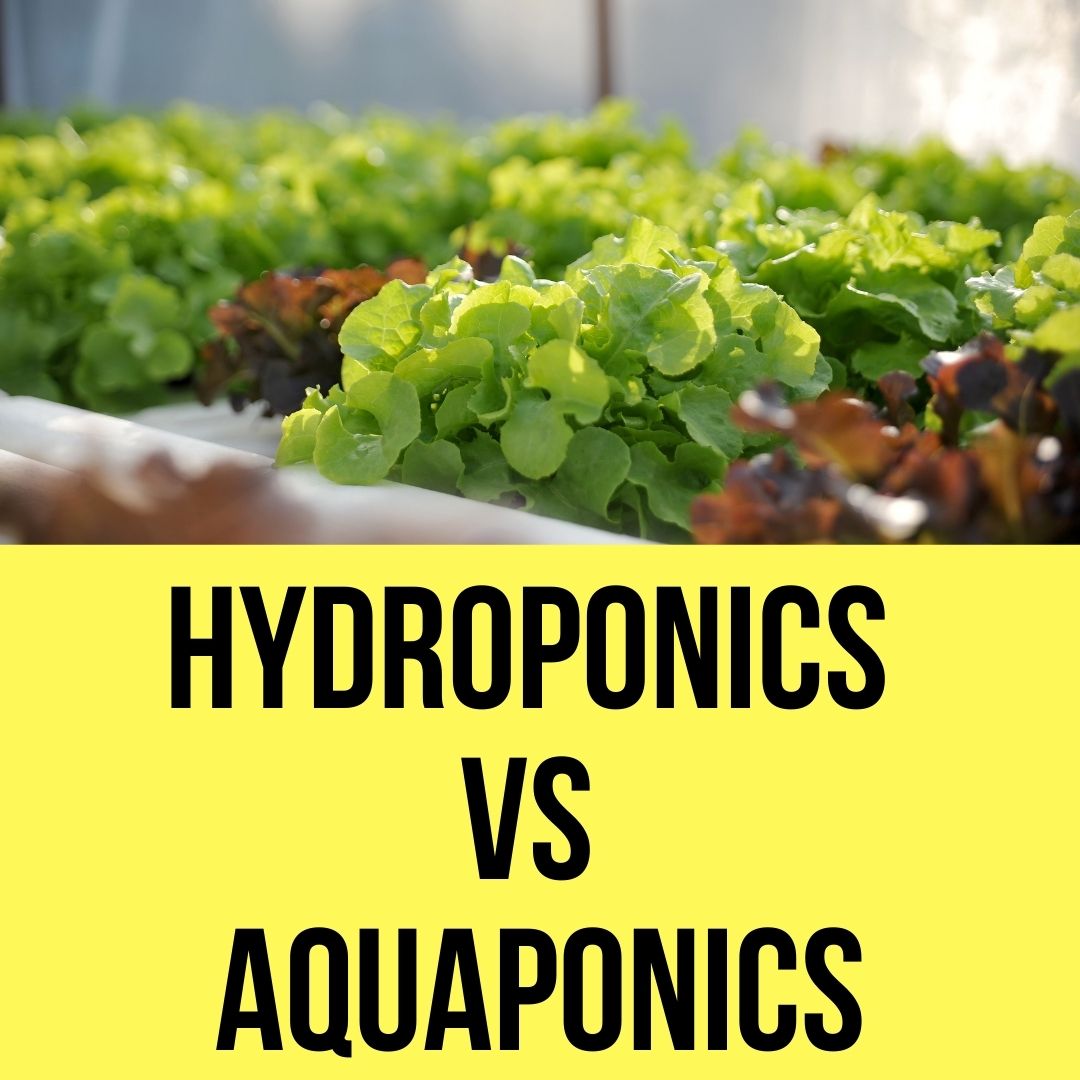Which one is the best for you?
Because of the many negative environmental repercussions of sustainable farming, such as the destruction of biodiversity assets, the polluting of water supplies, and the overuse of chemical-based inputs, livestock farming is coming under more scrutiny.
As the amount of land available for agricultural production decreases, producers are always exploring new and safer methods of growing plants while utilizing less area.
Because of this, the best and highest quality agricultural techniques have seen an enormous increase in popularity among small farmers as well as big commercial producers.
This article discusses Hydroponics vs Aquaponics: the difference between these two & the growth procedures in detail so that you really can choose which should be the best choice for you.
Hydroponics and Aquaponics are at the edge of soil-free systems, both of which provide gardeners with a plethora of important advantages to cultivation while also limiting any detrimental environmental consequences on the ecology.
Aquaponics is a procedure that combines raising fish and plants in the very same atmosphere and is believed to be a feasible approach.
Hydroponics, on the other contrary, is a type of gardening that enables crops to be maintained without the need for soil.
Each of these strategies has the potential to be useful and helpful, depending upon the type. However, some plants thrive in one approach over the other, which is why it’s a good idea to educate yourself on the variations between aquaponics and hydroponics.

What exactly is Hydroponics?
Hydroponics is a common way of generating plants without needing dirt. This is the most common way to cultivate basil, lettuce, and tomato in the US. Hydroponics is widely utilized since this produces accurate readings and high returns.
Hydroponics grows plants in nutrient-rich water. A suspension in nutrient-rich water allows the tree roots to acquire the nutrients they ought to flourish. Meanwhile, the remaining plants will have a supply of oxygen, allowing the evolution to proceed normally. There are several hydroponic techniques, most of which modify the movement of liquid to the plants.
What is Aquaponics?
Aquaponics is a growth system that grows fish and plants together. The microorganisms in the soil transform the fish feces straight into nitrates.
The nitrates are utilized as plant food before the residual water is given to the fishes, creating an efficient growth cycle known as the nitrogen cycle.
While the waste accumulates and becomes poisonous to the fish in the tank, the bacteria added to the water transforms the waste into beneficial nitrates before the fish are impacted.

Where Do Aquaponics and Hydroponics Differ?
Given the fact that both hydroponics and aquaponics are very successful as plant-growing systems, there have been some key distinctions between the two methods that you should be conscious of before deciding which is really the best choice for your particular situation.
Because both of these techniques are capable of growing plants without the need for soil, they may both be advantageous to you if you’re attempting to avoid the use of dirt in your gardening endeavors. Nonetheless, you will also have to devote some time to learn about the approach that you pick, this is why it is important to understand the distinctions between the two possibilities available to you.
The following are the most significant distinctions between aquaponics and hydroponics:
Chemical nutrient costs are high
In order to grow plants in hydroponic systems, chemical fertilizers must be used, which may be quite expensive.
These nutrients have also grown increasingly rare in latest days, which has resulted in an increase in the price of these minerals even more.
The fish feed that is utilized in an aquaponics system, on the other hand, is far less expensive than conventional fish feed.
Keep the nutrition solution in your possession
In spite of the fact that hydroponic systems demand a high concentration of nutrients in the water, the systems may sometimes collect an excessive amount of salts and chemicals, to the point where the water will become poisonous to the plants.
As a result, it will be necessary to dispose of the water on a regular basis.
If you are utilizing an aquaponics system, the nitrogen levels in the water are properly balanced, which means that the water should never need to be refilled.
Productivity
The outcomes of plant development should be somewhat more efficient and faster when opposed to a hydroponics system if an aquaponics garden has been completely set up and operating, which might take nearly six months to complete.
Maintenance is made simple
The upkeep required for an aquaponics system is quite low. The electron mobility of the water in a hydroponic system, on the other end, would need to be examined on a constant schedule if the process is to function properly.
The water chemistry in an aquaponics system will stay reasonably stable as a result of the natural ecology of development that takes place in the installation.
In most cases, you would only have to monitor the ammonia and pH levels once every week, and the nitrate readings once a month, depending on the situation.
The growth that occurs naturally
In a hydroponic system, the ecosystem is created by humans in the natural world. An aquaponics system is one that is meant to recreate a completely natural environment, hence making the system organic by definition.
The nutrients that are utilized in a hydroponic system might be made up of a variety of salts and chemicals, and that’s not environmentally friendly in large quantities.
It is possible to grow plants organically using aquaponics since the plant food is produced via a natural process of converting fish waste.
Pesticides:
Because there is no dirt in these setups, bugs are much less of a concern. However, some insects like spider mites may still be a nuisance and will need to be dealt with in these environments.
Because of the nature of a hydroponic system, you may need to apply pesticides to get rid of these pests.
Aquaponics systems, on the other hand, need the use of non-chemical means to ensure that the fish are not damaged.

Aquaponics & Hydroponics: What are the Similarities?
Even though these two methods have some substantial variations, they also have a few commonalities, including the following:
Season of growth:
Both of these techniques are well-known for their extended growth seasons when matched to more conventional ways of cultivation. Due to the fact that these methods are often installed inside, they allow for year-round plant growth, which ensures that some products may be produced even during the off-season.
Reduced adverse environmental consequences:
As aquaponic and hydroponic methods are used to produce plants inside, there are relatively few weed and insect concerns to contend with. Due to the fact that these methods are seldom confronted with such issues, you will be compelled to use fewer pesticides in your garden, reducing the likelihood of negative ecological repercussions.
Increased growth:
Due to the fact that these plants are grown in soil-free environments, they may thrive at a pace of 30-50 % quicker than their regular soil-based rivals. This rapid development comes as a result of the plants having increased accessibility to oxygen. Additionally, the added oxygen aids in the root development and absorption of nutrients.
Increased yields:
Plants produced in a hydroponic or aquaponic system generally yield roughly 30%-40% more than plants cultivated in conventional ways. Increased outputs are obtained when pest pressure is reduced and the plants get enough nourishment on an ongoing basis.
Hydroponics vs Aquaponics: Final thought
There offers fewer negative ecological implications, lesser material use, quicker plant development, and greater yields than soil-based growing.
Many people prefer aquaponics over hydroponics when selecting a soilless growth method. The combination of fish constructs nitrifying bacteria that convert fish waste into an organic source of nitrogen, instilling a sense, self-sustaining ecosystem.
Once set up, an aquaponics process requires minimal daily upkeep. Raising osmolarity does not need rehydrating the aquatic mixture. It needs less supervision and is easier to dispose of than a hydroponics aquatic solution.
Nonetheless, hydroponics is employed by both enthusiasts and professional producers. Hydroponics is quicker to put up, makes it look neater inside, charges lesser, and most significantly offers a better ROI (Return on Investment).
Thus your query point can’t be explained. Nobody can really assist you to choose between Hydroponics and Aquaponics either.
It just doesn’t matter which again is better. As a cultivator, you must select a method on your requirements or preferences. It’s all about getting what you want and having fun doing it.
Aquaponics and hydroponics both provide progress of the implementation and larger yields, thus there is no agreement on which is superior. Therefore, decide depending on your abilities and preferred strategy.
For example, if your primary aim is to get your generating site up and running fast, hydroponic methods normally take less time to line up because you’re not raising fish with the plants.
Aquaponics may well be the ideal alternative for you if you are concerned about the expense of chemical fertilizers used in hydroponic systems. Because both functions work, it doesn’t signify which one you select.
Using soilless techniques to produce plants becomes more and more trendy, and it offers a number of significant benefits over conventional methods for the farmer.
Property owners are particularly fond of two kinds of processes: hydroponics, which develops plants only inside a container, and aquaponics, which integrates hydroponics with the cultivation of aquatic animals.
Conclusion:
All these methods have commonalities and dissimilarities that really should be taken into consideration before starting the construction of this scope and magnitude.
Though many people feel that aquaponics is the superior method of producing plants, this is mostly due to the fact that it is more environmentally friendly, both methods offer significant benefits over traditional soil-based gardening.
Thank you for reading this post and taking the time to do so. We hope the information provided here will assist you in selecting the most appropriate horticulture approach for your project.
